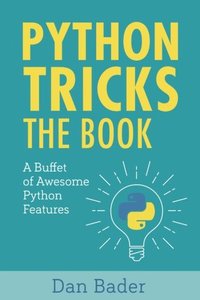
Python Machine Learning: Machine Learning and Deep Learning with Python, scikit-learn, and TensorFlow 2, 3/e
內容描述
Key Features
Third edition of the bestselling, widely acclaimed Python machine learning book
Clear and intuitive explanations take you deep into the theory and practice of Python machine learning
Fully updated and expanded to cover TensorFlow 2, Generative Adversarial Network models, reinforcement learning, and best practices
Book Description
Python Machine Learning, Third Edition is a comprehensive guide to machine learning and deep learning with Python. It acts as both a step-by-step tutorial, and a reference you'll keep coming back to as you build your machine learning systems.
Packed with clear explanations, visualizations, and working examples, the book covers all the essential machine learning techniques in depth. While some books teach you only to follow instructions, with this machine learning book, Raschka and Mirjalili teach the principles behind machine learning, allowing you to build models and applications for yourself.
Updated for TensorFlow 2.0, this new third edition introduces readers to its new Keras API features, as well as the latest additions to scikit-learn. It's also expanded to cover cutting-edge reinforcement learning techniques based on deep learning, as well as an introduction to GANs. Finally, this book also explores a subfield of natural language processing (NLP) called sentiment analysis, helping you learn how to use machine learning algorithms to classify documents.
This book is your companion to machine learning with Python, whether you're a Python developer new to machine learning or want to deepen your knowledge of the latest developments.
What you will learn
Master the frameworks, models, and techniques that enable machines to 'learn' from data
Use scikit-learn for machine learning and TensorFlow for deep learning
Apply machine learning to image classification, sentiment analysis, intelligent web applications, and more
Build and train neural networks, GANs, and other models
Discover best practices for evaluating and tuning models
Predict continuous target outcomes using regression analysis
Dig deeper into textual and social media data using sentiment analysis
Who This Book Is For
If you know some Python and you want to use machine learning and deep learning, pick up this book. Whether you want to start from scratch or extend your machine learning knowledge, this is an essential resource. Written for developers and data scientists who want to create practical machine learning and deep learning code, this book is ideal for anyone who wants to teach computers how to learn from data.
目錄大綱
Table of Contents
Giving Computers the Ability to Learn from Data
Training Simple ML Algorithms for Classification
ML Classifiers Using scikit-learn
Building Good Training Datasets - Data Preprocessing
Compressing Data via Dimensionality Reduction
Best Practices for Model Evaluation and Hyperparameter Tuning
Combining Different Models for Ensemble Learning
Applying ML to Sentiment Analysis
Embedding a ML Model into a Web Application
Predicting Continuous Target Variables with Regression Analysis
Working with Unlabeled Data - Clustering Analysis
Implementing Multilayer Artificial Neural Networks
Parallelizing Neural Network Training with TensorFlow
TensorFlow Mechanics
Classifying Images with Deep Convolutional Neural Networks
Modeling Sequential Data Using Recurrent Neural Networks
GANs for Synthesizing New Data
RL for Decision Making in Complex Environments
作者介紹
Sebastian Raschka is an Assistant Professor of Statistics at the University of Wisconsin-Madison focusing on machine learning and deep learning research. Some of his recent research methods have been applied to solving problems in the field of biometrics for imparting privacy to face images. Other research focus areas include the development of methods related to model evaluation in machine learning, deep learning for ordinal targets, and applications of machine learning to computational biology.
Vahid Mirjalili obtained his Ph.D. in mechanical engineering working on novel methods for large-scale, computational simulations of molecular structures. Currently, he is focusing his research efforts on applications of machine learning in various computer vision projects at the Department of Computer Science and Engineering at Michigan State University. He recently joined 3M Company as a research scientist, where he uses his expertise and applies state-of-the-art machine learning and deep learning techniques to solve real-world problems in various applications to make life better.



